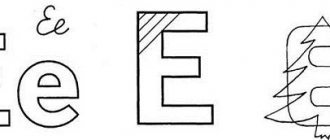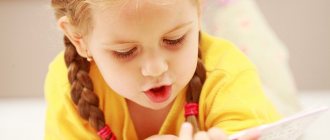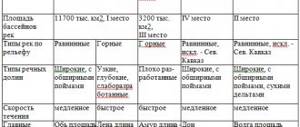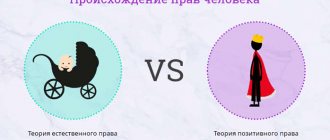Objectives of the lesson: systematization and generalization of knowledge and methods of work
According to the requirements of the Federal State Educational Standard, two types of goals
:
- Content-based: identifying the level of students’ knowledge on a topic (cycle, section), a high degree of systematization of knowledge, formulating a generalization of knowledge on the subject
- Activity-based: education of general culture, aesthetic perception of the surrounding reality, creation of conditions for self-esteem of students, development of spatial thinking, creative abilities, independent work skills, ability to work in a group, development of cognitive interest, education of leadership qualities, training in self-analysis techniques, comparisons, comparisons, development skills of generalization, systematization of knowledge.
Recommended methods of work: partial-search, reproductive-search, problem-based, verbal-visual.
Overview of lesson types: lesson on updating knowledge and skills (repetition lesson)
The main form of organizing the educational process is the lesson. One of the important conditions for conducting a lesson is the rational choice of its type and compliance with the basic elements of its structure.
In the pedagogical literature there is no single classification of types of lessons ; there are several approaches to this problem . Classification of lesson types is made according to the didactic purpose, the purpose of organizing cognitive activity, the main stages of the educational process, teaching methods, and the methods of organizing students' educational activities.
The didactic goal is the most important component of the learning process, therefore classification on this basis is closest to the real lesson.
The typology of lessons based on didactic purpose is as follows:
- A lesson in learning new knowledge;
- Lesson on the integrated application of knowledge and skills (consolidation lesson);
- Lesson on updating knowledge and skills (repetition lesson);
- Lesson on systematization and generalization of knowledge and skills;
- Lesson of control of knowledge and skills;
- Lesson on correction of knowledge, skills and abilities;
- Combined lesson.
I would like to dwell in more detail on this type of lesson as a lesson on updating knowledge and skills (repetition lesson).
Our ancestors knew about the benefits of repetition. Popular wisdom says: “Repetition is the mother of learning.”
In the learning process, repetition of learned material plays an important role. The repetition lesson has the greatest opportunities for integration and implementation of interdisciplinary connections.
The purpose of the repetition lesson: deeper assimilation of knowledge, a high level of generalization, systematization of educational material, establishing a logical connection between new and previously studied material.
Review lesson objectives
- Educational - repeat, consolidate and systematize the basic concepts of previously covered material.
- Educational - to instill a culture of mental work, the ability to work collectively, in a group, to independently find the right solution to a given goal.
- Developmental - expand your understanding of a given topic, section, prepare for the perception of new material, develop logical thinking.
It is necessary to repeat throughout the entire academic year, so that repetition is not a job from time to time, so that repetition is an organic part of the methodology for studying the academic discipline.
The most common classification of types of repetition :
- Review at the beginning of the school year;
When reviewing at the beginning of the year, the focus should be on repeating topics that have a direct connection with the new teaching material. New knowledge acquired during the lesson should be based on a solid foundation of previously acquired knowledge.
- Current repetition of everything previously covered
- Repetition of what has been covered in connection with the study of new material (accompanying repetition);
- Repetition of what has been covered without connection with new material;
Current repetition in the process of learning new material is a very important point in the repetition system. It helps to establish an organic connection between new material and previously covered material. Ongoing repetition can be carried out in connection with the study of new material. In this case, the material is repeated, naturally linked with the new material. Repetition here is an integral and integral part of the newly studied material.
- Thematic repetition (generalizing and systematizing repetition of completed topics and sections of the program);
With thematic repetition, the knowledge and skills of students are systematized at the final stage of studying a topic or section of the program.
- Final review (organized at the end of a large section of the program or at the end of the academic year);
The goals of thematic repetition and final repetition are similar, the material of repetition (selection of the essential) is very similar, and the methods of repetition in a number of cases coincide. However, in the final repetition the material narrows down. Such repetition promotes greater awareness of what has been covered, indicates the connection between various sections of the academic discipline and at the same time makes it possible to review a large volume of material.
The structure of a lesson on updating knowledge and skills (repetition lesson).
1) Organizational stage.
2) Checking homework, reproducing and correcting the knowledge, skills and abilities of students necessary for creative solution of assigned problems.
3) Setting the goals and objectives of the lesson. Motivation of students' educational activities.
4) Updating knowledge.
- in order to prepare for the test lesson
- in order to prepare for studying a new topic
5) Application of knowledge and skills in a new situation
6) Generalization and systematization of knowledge
7) Control of assimilation, discussion of mistakes made and their correction.
 Information about homework, instructions on how to complete it
Information about homework, instructions on how to complete it
9) Reflection (summarizing the lesson)
A repetition lesson can be carried out in the form of a repeating and generalizing lesson; dispute; games (KVN, competition, quiz); theatrical lesson (lesson-court); conferences; excursions; lesson-consultation; lesson - analysis of tests; review lecture; review conference; lesson-conversation.
The effectiveness of a repetition lesson depends on how widely various types of reproductive-search, partly search, creative activity of students are used in the lesson. It does not achieve its goal if preference is given to ordinary reproductive activity. The teacher must prepare creative tasks that allow a fresh look at what has been previously studied. In this case, the developmental function is implemented the more successfully the more widely interdisciplinary connections are used, allowing one to transfer, collapse and systematize knowledge.
Properly organized repetition is one of the factors contributing to the intellectual development of each student and his achievement of deep and lasting knowledge. Without retaining acquired knowledge, without the ability to apply it at the right time, learning new material is always fraught with great difficulties and does not give the desired effect. Thus, the purpose of repetition is to establish logical connections between newly studied and previously studied material, to enrich memory, broaden horizons, bring knowledge and skills into the system, and self-organize students.
Approximate structure of each type of lesson according to the Federal State Educational Standard
| 1. Lesson structure for learning new knowledge 1) Organizational stage. 2) Setting the goals and objectives of the lesson. Motivation of students' educational activities. 3) Updating knowledge. 4) Primary assimilation of new knowledge. 5) Initial check of understanding. 6) Primary consolidation. 7) Information about homework, instructions on how to complete it.
| 4. Lesson structure of systematization and generalization of knowledge and skills 1) Organizational stage. 2) Setting the goals and objectives of the lesson. Motivation of students' educational activities. 3) Updating knowledge. 4) Generalization and systematization of knowledge. Preparing students for generalized activities. Reproduction at a new level (reformulated questions). 5) Application of knowledge and skills in a new situation. 6) Monitoring learning, discussing mistakes made and correcting them. 7) Reflection (summarizing the lesson). |
| 2. Structure of a lesson on the integrated application of knowledge and skills (consolidation lesson) 1) Organizational stage. 2) Checking homework, reproducing and correcting students’ basic knowledge. Updating knowledge. 3) Setting the goals and objectives of the lesson. Motivation of students' educational activities. 4) Primary consolidation: - in a familiar situation (typical) - in a changed situation (constructive). 5) Creative application and acquisition of knowledge in a new situation (problem tasks). 6) Information about homework, instructions on how to complete it. 7) Reflection (summarizing the lesson). | 5. Structure of a lesson for monitoring knowledge and skills 1) Organizational stage. 2) Setting the goals and objectives of the lesson. Motivation of students' educational activities. 3) Identification of knowledge, abilities and skills, checking the level of development of students' knowledge and skills (tasks in terms of volume or degree of difficulty must correspond to the program and be feasible for each student). Control lessons can be written control lessons, lessons combining oral and written control. Depending on the type of control, its final structure is formed. 4) Reflection (summarizing the lesson). |
| 3. Structure of a lesson on updating knowledge and skills (repetition lesson) 1) Organizational stage. 2) Checking homework, reproducing and correcting the knowledge, skills and abilities of students necessary for creative solution of assigned problems. 3) Setting the goals and objectives of the lesson. Motivation of students' educational activities. 4) Updating knowledge. -in order to prepare for the test lesson; -in order to prepare for studying a new topic. 5) Application of knowledge and skills in a new situation. 6) Generalization and systematization of knowledge. 7) Control of assimilation, discussion of mistakes made and their correction.
9) Reflection (summarizing the lesson). | 6. Structure of a lesson for correcting knowledge, skills and abilities. 1) Organizational moment. 2) Setting the goals and objectives of the lesson. Motivation of students' educational activities. 3) Results of diagnostics (monitoring) of knowledge, skills and abilities. Identification of typical errors and gaps in knowledge and skills, ways to eliminate them and improve knowledge and skills. Depending on the diagnostic results, the teacher plans collective, group and individual teaching methods. 4) Information about homework, instructions on how to complete it. 5) Reflection (summarizing the lesson). |
| 7. Structure of a combined lesson 1) Organizational stage. 2) Setting the goals and objectives of the lesson. Motivation of students' educational activities. 3) Updating knowledge. 4) Primary assimilation of new knowledge. 5) Initial check of understanding. 6) Primary consolidation. 7) Control of assimilation, discussion of mistakes made and their correction.
9) Reflection (summarizing the lesson). | |
Original work:
Overview of lesson types: lesson on updating knowledge and skills (repetition lesson)
2nd grade: “City and Country”
Purpose of the lesson: to summarize the students’ knowledge gained while studying the topic “City and Countryside”.
Equipment: wall paintings depicting the city and village.
During the classes.
It is more appropriate to conduct this lesson in the form of a conversation.
Questions for conversation:
- Where we live?
- What is the name of our city?
- What is the name of the street where the school is located?
- What houses are on the street?
- What are the houses on our street intended for? (residential, shops, studios, etc.)
- How is our street illuminated?
- What plants are there on our street?
- How is a street different from an avenue? from the alley? from the square?
- What avenues are there in our city?
- What is the name of the central square of our city?
- What do people do in cities?
- What does the city give to the village? And the village to the city?
- How is a city different from a village?
- What do people do in the village?
The conversation is accompanied by a repeated examination of the picture.
At the end of the lesson - a creative task: draw the answer to one of the questions written on the board.
The following questions are written on the board:
-What do people do in the village?
-What do they do in the city?
—
- What does the village give to the city?
Lesson summary: once again emphasize that a city cannot survive without a village, and a village cannot survive without a city.
Selection of didactic and visual material for lessons on generalization and systematization of knowledge
The teacher should be especially careful when choosing didactic material. For lessons in this category, graphs, pivot tables, algorithms, and infographic materials that give the most general and detailed idea of the entire topic are best suited. Work on such materials should be built in stages: when analyzing each graph or diagram, it is important to draw students’ attention to the interconnection of individual aspects, emphasize basic concepts and ideas, and invite students to compare and contrast certain facts.
At the stages of updating knowledge or initial consolidation, it is recommended to use audio and video materials. This could be an educational film, a series of filmstrips, fragments of a feature film or a documentary. After viewing, students must not only retell and discuss the plot of what they saw, but also be sure to connect it with the material in the textbook, with their knowledge.



